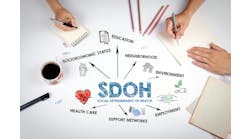Cross-sector data sharing is gaining momentum as an approach to whole-person care, but wrangling data from different referral platforms, EHRs and reporting mechanisms can be overwhelming. Speaking at the Community Information Exchange (CIE) Summit 2020 in San Diego this week, three panelists described their progress and challenges.
Carly Hood-Ronick, M.P.A., M.P.H., director of CCO Strategy and Health Equity for the Oregon Primary Care Association, said that from the 30,000-foot level, there is a recognition that data should be driving decisions around issues such as resource allocation, yet gathering the data is difficult. “We have many payers and many EHRs aggregating data,” she said. “We have people using different screening tools and reporting platforms and seeking to meet different grant requirements. That creates a lot of chaos for folks on the ground doing their best to combine information at their fingertips. That is a big challenge we face.”
The State of Oregon has created a statewide advisory group to develop a CIE at the state level. “A year ago, we begin to think about how to aggregate social and medical data — not to pick a platform or tool but to develop a roadmap of how to build this,” Hood-Ronick said. At the local level, she noted, there has been an explosion in the use of Social Services Resource Locator programs such as Aunt Bertha and Unite Us.
A few years ago, the state also passed legislation to improve standardization of data gathering on race, ethnicity, language and disability. In 2013, the state government legislated that Medicaid providers collect this data, and as of Oct. 1, 2020, it will become more of a mandate, she said. “It is another challenge and an opportunity to think about how we are building the system to feed data aggregation.”
Michele Horan, R.N., senior director of operations at Alliance for Better Health in Albany, N.Y., said her organization uses the Unite Us platform for its Healthy Together network to bring together clinical and social care partners to do care coordination and manage wellness.
She noted that the community-based organizations are addressing social influences on health by addressing food and housing insecurity and behavioral health. Besides making referrals easier, a goal of the network is to have a clear picture of the care coordination team and care plan. Previously, there was no single source of truth on the care plan and little continuity, she said. “Nobody is talking to one another. The EHRs don't speak to one another,” she added. There are a lot of payers supporting the work through grant funding, but the payers and grants drive unique deliverables and they are not measuring the same thing, Horan added. “They might be paying for many care coordination programs that overlap, and there is no robust network infrastructure to measure return on investment. We want to recognize and reward partners for their work, with an emphasis on pay for performance and value-based care. We want to include them in conversations as part of the care team with clinical partners.”
Horan added that one effort under way is to develop better integration between the Unite Us platform and health system EHRs to cut down on data entry duplication. Across the state of New York, a wide variety of referral management platforms are being used. She said there is a need to come together and standardize some aspects of how they operate across the state so that data can be shared more easily.
Oregon is grappling with how to develop a statewide system that balances community input with standardization and allows data to be rolled up to the state level, Hood-Ronick said. “How do we build a platform that has some standard mechanisms in it? We are talking about developing a social determinants of health or social needs screening metric. How do we make sure it is relevant to all kinds of health system partners?” One idea is to pick a few domains —housing and food insecurity — and ask that certain things be measured in order to standardize while being flexible.
Also speaking on the panel was Rey Faustino, CEO of One Degree, a nonprofit organization based in the Bay Area that is focused on empowering low-income people to easily access the resources they need through a website and mobile app directories. He noted that when you have thousands of nonprofit organizations and multiple resource and referral tools in one region, “it is an inherently messy system and will not be solved by a top-down system.” He said for-profit resource and referral tools are disincentivized to collaborate; rather, they are incentivized to compete with each other. He argued for re-imaging procurement processes “so the system isn’t plagued by for-profit companies extracting value from our communities.”


